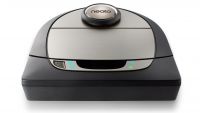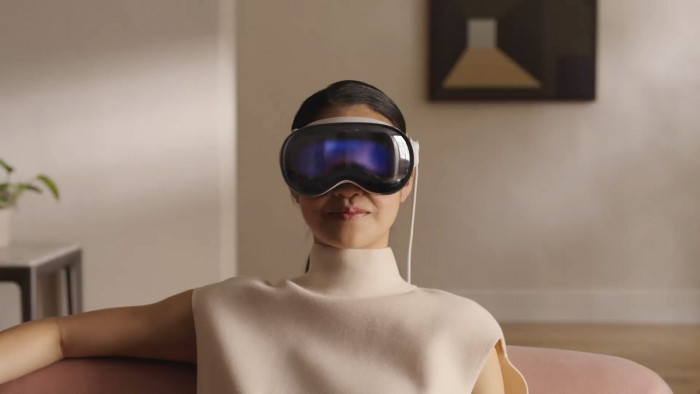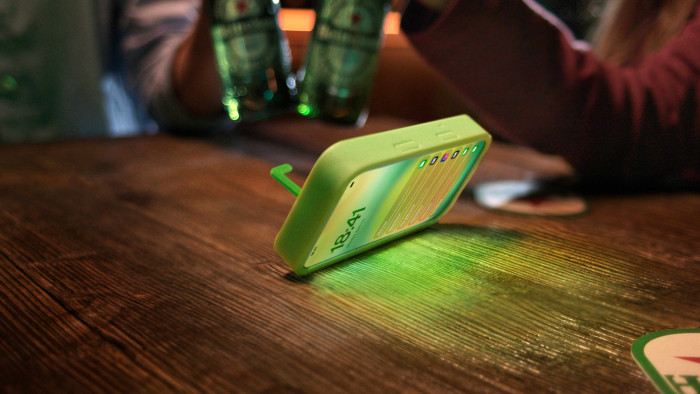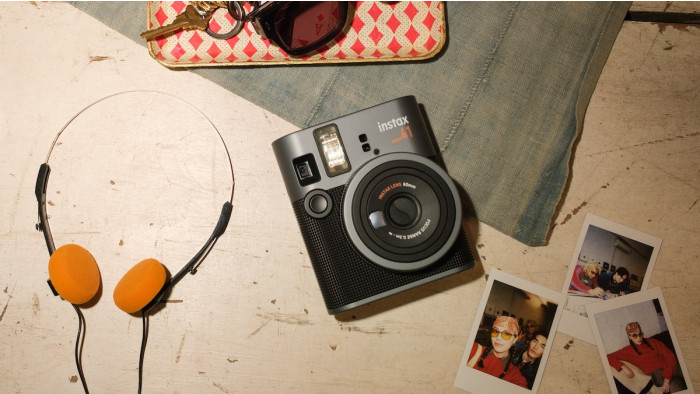Best robot vacuum cleaner: for carpet, pet hair, long hair and hardwood
All of the cleaning, none of the effort: but which is the best robot vacuum cleaner?

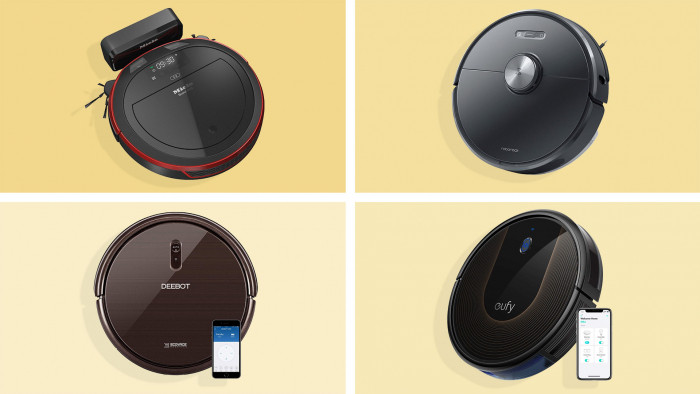
The best robot vacuum cleaners have scuttled through their initial novelty phase, and are now eagerly bumping up against ‘essential labour saving device’ status.
The modern RVC field is a rich and varied one, with multiple manufacturers making automated cleaners of all shapes, sizes and prices.
If your budget is significantly lower than £400, the Eufy RoboVac 30C is our value choice. It’s a diligent and tidy cleaner that works its way into every nook and cranny, and can be had for half the price of the Neato.
- If you think going full robot is too much, then you need to read our best cordless vacuum cleaner guide.


The shortlist: best robot vacuum cleaner

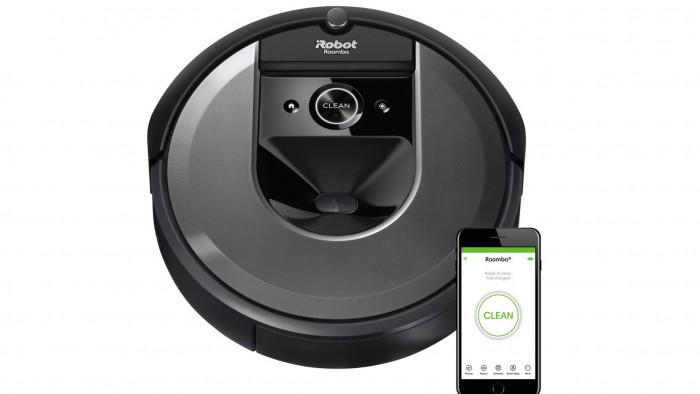
The iRobot Roomba i7+’s enlarged base station automatically sucks up the RVC’s dirt load into a disposable bin bag at the end of every run. iRobot’s unique dual-rubberised brushes are ideal for dealing with pet hair, while Smart Mapping technology lets you specify which rooms are cleaned. A laser barrier lets you block off areas invisibly.

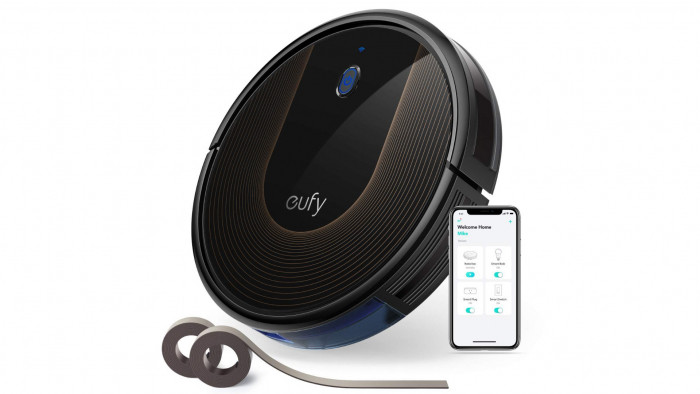
The Eufy RoboVac 30C is our best value choice. It uses nine anti-collision infrared sensors to navigate. While it has a lengthy 100 minute run time, you can also set it off on 30 minute cleans. It ships with boundary strips for fencing off areas of your home, as well as a remote control. Amazon Alexa and Google Assistant are also compatible.

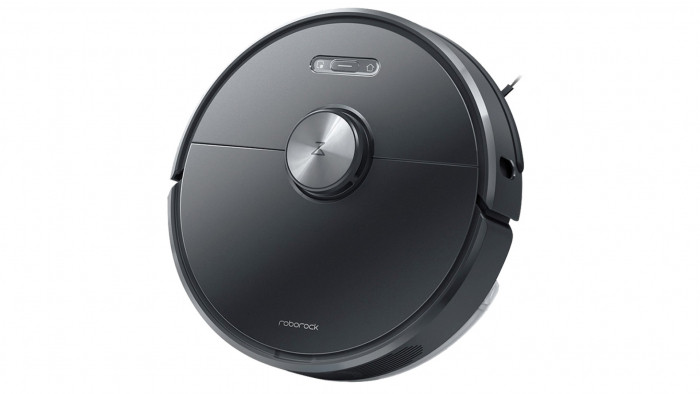
The Roborock S6 maps out your home with a 300rpm laser rangefinder. You can then label and select individual rooms for cleaning. It navigates using 14 sensors, including an accelerometer, odometer, infra-red cliff sensors, and compass. The S6 also has a mopping function for hard floors.

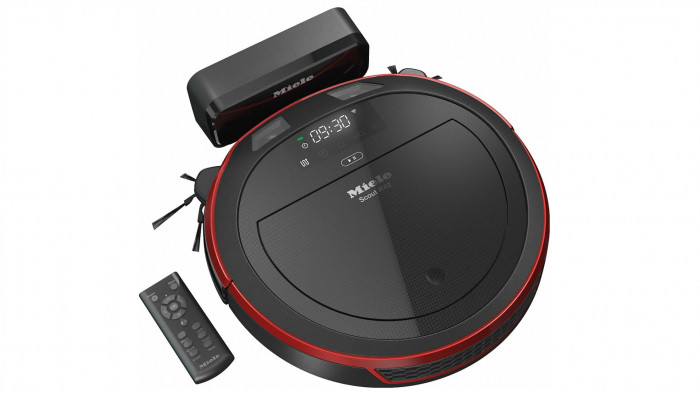
The Miele Scout RX2 employs two front cameras for high-precision 3D object detection. Its unique twin-side-brush arrangement enables it to clean out tight corners, and it packs 60 minutes of battery life. While the onus is on the Miele app, the RX2 also packs in a remote control.

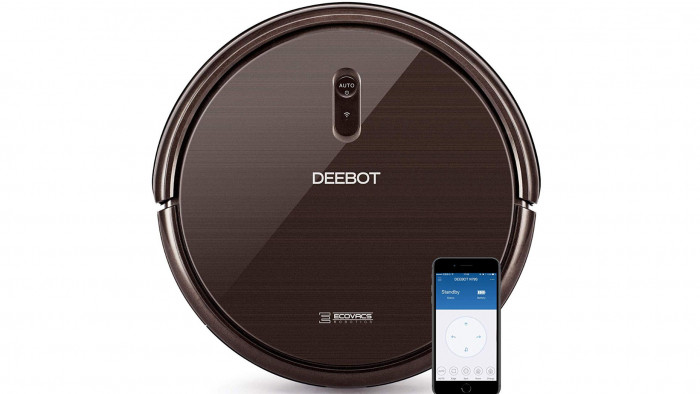
The Ecovacs Deebot N79S doesn’t map out rooms, but its Smart Motion technology causes it to take multiple passes across an entire run. Control options include an app, a bundled remote control, and support for Amazon Alexa and Google Assistant. Anti-drop sensors keep it from tumbling down stairs.

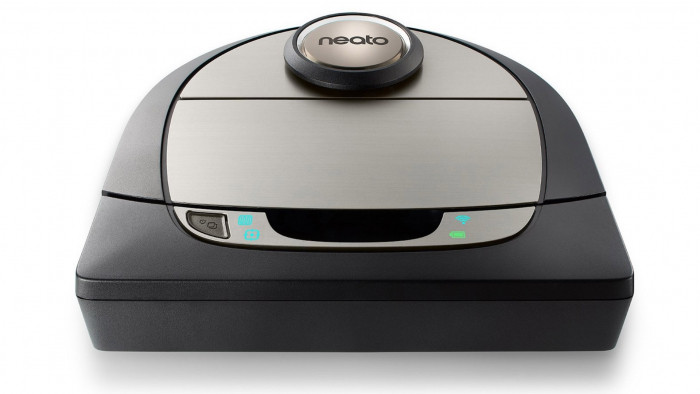
The Neato Botvac D7 is our best overall choice. It uses laser guidance to find its way around your home, as well as to construct a zoned map of the environment, onto which you can draw no-go lines. Its unusual flat front facilitates a very wide brush, so wherever it goes it cleans, and it enjoys 120 minutes of battery life.

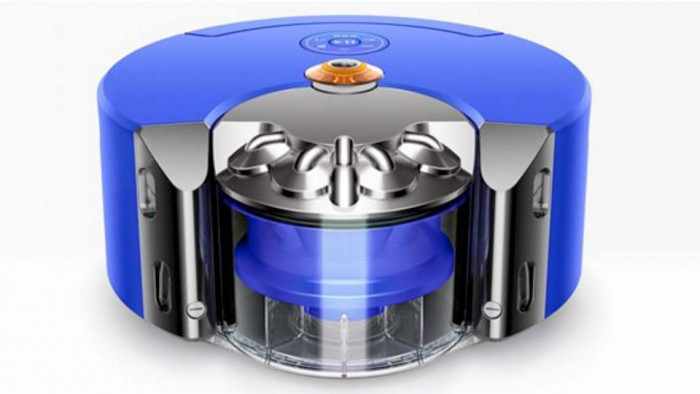
Dyson's second robo vac is a lot smarter than its first the 360 Eye. It has full room mapping, which lets you schedule cleaning much more effectively. Vacuum power has increased too. And as the price isn't higher, there's little reason to buy the original 360 Eye unless you find it on sale. However, it's not the fastest robo vac around. Heurist is all about a deeper clean, not a quick surface-level one.

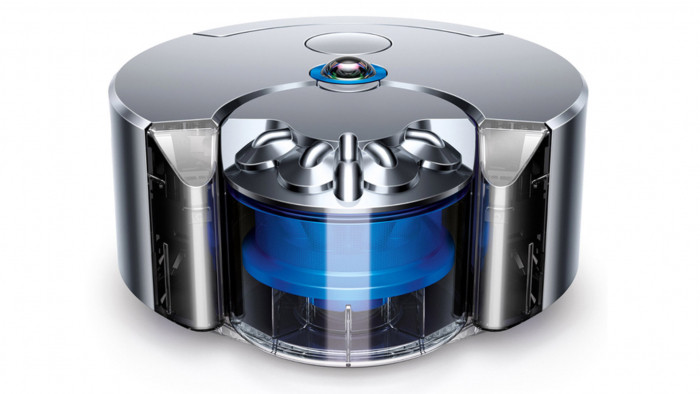
The Dyson 360 Eye features the British brand’s customary cyclone technology, which enables it to clean up even fine dust. It uses 360 vision technology to identify landmarks and triangulate its position. The Dyson offers the shortest battery life in this test at just 40 minutes, but will recharge and resume automatically.
The expert's view
Best robot vacuum cleaners: how we selected
The robot vacuum cleaner market is expanding at a rapid rate, and is expected to grow USD 1.7 billion by 2022 (according to a March 2018 Technavio report).
Not all of the brands that have come to market are experts in this multi-disciplinary field. Alongside mastery of vacuum cleaner technology, robot vacuum cleaner manufacturers need to have a solid grounding in robotics, AI and machine vision.
To that end, we have scoured numerous respected review websites to assemble an overview of the most revered and respected robot vacuum cleaner brands. We’ve also looked at the most popular models from a retail perspective.
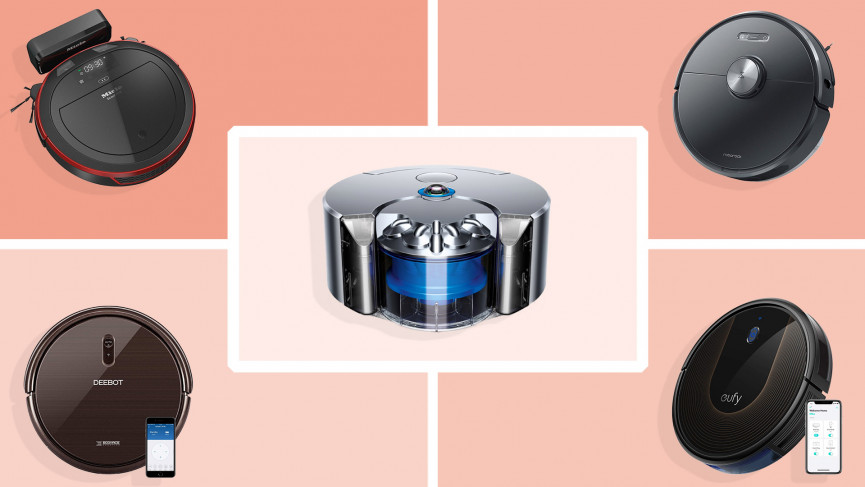
Value was the other major factor we considered when assembling our group test list. There are now multiple price points in the robot vacuum cleaner market, ranging from around £200 for a competent bump-and-run machine right up to £1,200 for a laser-guided RVC that will take out the rubbish for you. Both ends of the spectrum are represented here.
To fairly represent the scope of the field, we’ll be naming both our overall favourite and a ‘best value’ pick, but we’ll run through the strengths and weaknesses of each and every model that scoots over our carpet at some point.
It’s worth noting that each and every model we tested has its own merits, and that our top pick wasn’t an outright winner in any major category. It’s well worth reading the fine detail of our ‘The Rest’ section, because there might be a better RVC for your particular circumstances.
We ended up with seven units from seven different robot vacuum cleaner manufacturers. These include familiar brands like Miele and Dyson, but most of our picks come from newer specialist brands. Neato, iRobot, Eufy, Roborock, and Ecovacs may not be quite such household names just yet, but several of them are well on their way.

Indeed, iRobot is the clear market leader, and is represented here by its latest flagship model the iRobot i7+. Neato is another highly popular robot vacuum cleaner brand, and is here represented by its flagship (but now mid-priced) Neato Botvac V7.
Dyson started developing its own robot vacuum cleaner at the turn of the millennium, which has resulted in a typically quirky and distinctive RVC that doesn’t adopt some of the standard practices found elsewhere - for better and for worse.
When whittling down our list, we asked ourselves what a good robot vacuum cleaner should be able to do regardless of price. Strong cleaning performance and competent navigation are the two baseline requirements. What good is a brilliant vacuum cleaner if it is tied to poor navigation software that frequently gets snagged on furniture? Conversely, the most sophisticated machine navigation is for nought if the cleaning technology can’t pick up its fair share of dirt and dust en route.
Any other features, from ‘no go’ marker technology to Wi-Fi connectivity will be tested and noted, but they aren’t fundamental to a good robot vacuum cleaner experience. That said, app connectivity is fast becoming an essential feature, even at the entry level, so we’ll pay extra attention to that aspect.
Best robot vacuum cleaners: how we tested
To test the robot vacuum cleaners we have shortlisted, we sent each one on several standard runs (so no boost or turbo settings, unless they’re the default) from the same position in the same environment.
That environment is a two bedroom ground flat with a separate kitchen-diner, a living room, a bathroom, and a small L-shaped hallway serving as a hub to them all. The kitchen-diner and bathroom have hard floors, while the rest is all carpeted.
There are challenging elements in each room, but two in particular stand out. The kitchen-diner has a table and four chairs that present a forest of thin, black, metal legs - a test for any RVC’s navigation and bump-response capabilities. In the living room, meanwhile, we have a fairly thick-pile rug that tests a cleaner’s adaptability, wheel and brush clearance, and brush power.
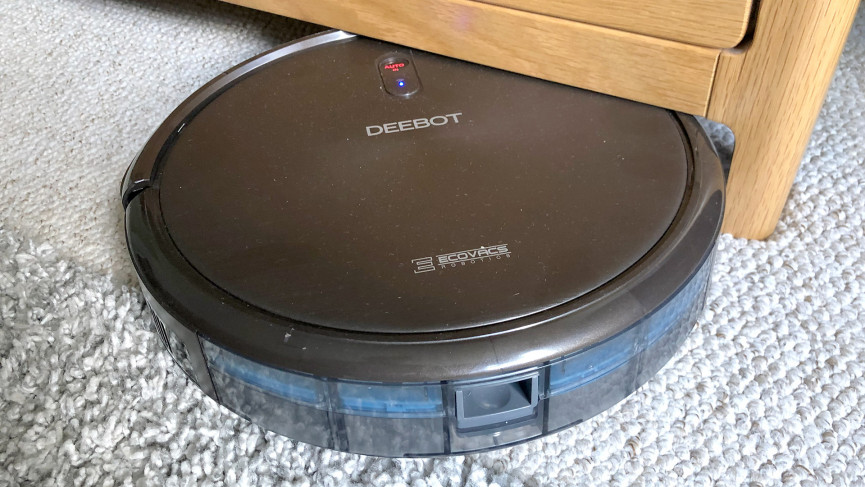
Sofa legs and thick carpets are enemies to most robot vacuums
We kept dangling wires out of the way where possible, as all manufacturers recommend in their manuals. But one or two accidents did occur along the way, as we’ve noted.
On the initial runs we’d monitor each device’s running, observing how efficiently and smartly they navigate their environment. We would record how long the run took, and any difficulties they seemed to have along the way.
We would download the related app and use it to initiate each run, paying attention to the quality of the software experience and the ease of the set-up process. This is the primary interface between you and your robot vacuum cleaner, after all, so it really matters that the app offers an intuitive and reliable experience.

Those cleaners in the £500 and above category all have the ability to produce maps of your home and share them via their app, so we tested these for ease of use and accuracy.
We used a noise-measuring app to give an approximation of how noisy each RVC is, but we also relied on our own impressions of these noise levels.
Besides general observation, we also conducted a detailed examination of each RVC’s cleaning ability. This involved spreading a delicious concoction of 20g of panko breadcrumbs and 20g of green lentils around the kitchen and hallway (so a split of hard and carpeted flooring), then setting each RVC off on a run lasting no longer than 30 minutes. We then weighed up how much of the mixture made its way into the cleaner while noting any specific areas it struggled to reach.
It’s worth keeping in mind that no robot vacuum cleaner to date is a totally comprehensive cleaner that will reach every corner and edge. They’re designed instead for regular maintenance cleans of main traffic areas.
We also took into account the additional features and back-of-the-box claims that each RVC manufacturer claims. Crucially, we weighed all of this against each device’s current price tag.
Best robot vacuum cleaners: The test results
The best robot vacuum cleaner reviewed: Neato Botvac D7 (£564)
We found the Neato Botvac V7 to be the most balanced all-round cleaner. While its rivals are more eye-catching and do individual things better, it cleans very well while ticking all the necessary feature list boxes. Most importantly, we didn’t find any major complaints during our test period, unlike each of the big-hitting alternatives.
The Neato’s D-shaped design isn’t as sleek as its circular rivals, which means it isn’t as nimble in tight spaces. Despite this, it managed to work its way around and underneath our kitchen table and chairs without too much fuss.
The Neato’s pathfinding doesn’t seem to be as refined as some, and it ended up mounting rubber doorstops and angled clothes airer legs where other machines neatly circumnavigated them. But crucially, it never once got itself stuck.
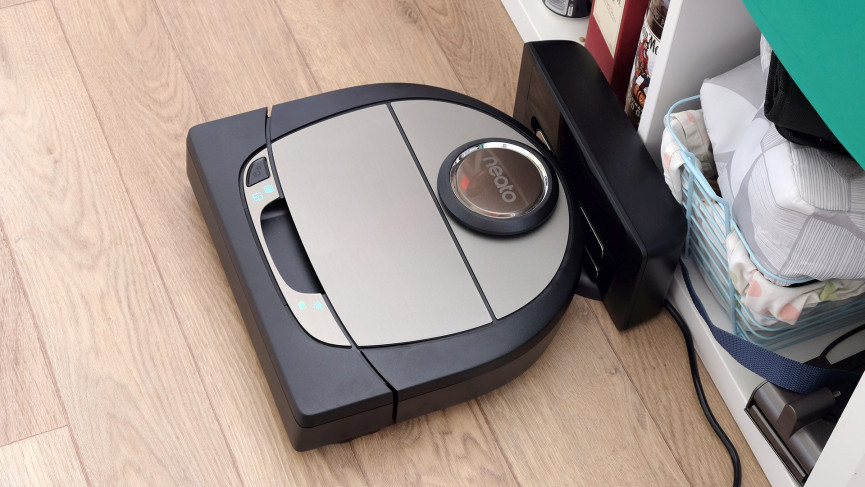
Indeed, the only stoppage the Neato ran into during our test period was due to an errant MacBook power cable wrapping around the main brush. This was our fault and easy to fix, and the Neato was able to continue its run without delay or further disruption.
Even more notably, the D7’s large wheels and suspension gave it the clearance to negotiate our thick-pile rug with no issues at all. Elsewhere, the Neato’s unorthodox ‘D’ shape enables it to have the widest brush of all the cleaners, running literally the entire width of its front edge.
Alongside the Dyson, it’s the only RVC that can say it cleans exactly where it runs.
In our cleaning test, it picked up a decent amount of the mixture, placing it joint third. It was one of the best in the corners and pretty good on the join between the two rooms and surface types. And it did all this in just 15 minutes.

The Neato also features laser-guided navigation for efficient coverage, enabling it to complete a full run in just 42 minutes - one of the shortest in our tests. It is rather noisy though, even in Eco mode.
The price of the Neato Botvac V7 has dropped from its £800 RRP a year ago to a much more competitive £550. This makes it significantly cheaper than the Dyson and the iRobot, and around £100 less than the Miele, while it’s only a little more expensive than the Roborock S6.
The Neato app is clean and functional, though not as slick as iRobot’s. We found it ever so slightly annoying that the app couldn’t use the D7’s initial cleaning run for the My Floor Plan process. But once we initiated the latter, the Neato app divided our rooms into zones, which could then be cleaned individually.
There are better designed, quieter, smarter robot vacuum cleaners in this group test. But none of them could boast the same level of reliability or all-round competence at such a keen price as the Neato Botvac V7, and we really appreciate the sheer width of that brush.
The best robot vacuum cleaner for value
Eufy RoboVac 30C (£269)
The Eufy RoboVac 30C is our pick for the best value robot vacuum cleaner. Together with the Ecovacs Deebot N79S, it takes a much simpler, dare we say dumber approach to pathfinding than the rest, but the end results are strong.
Rather than map its environment with lasers and cameras, the Eufy RoboVac 30C finds its way around through a combination of bumper and infrared sensors. It doesn’t map rooms either, but rather keeps on bouncing around until it runs out of juice.
It’s a very diligent cleaner despite this brute force approach. The little bot really tries to ferret itself into every nook and cranny, and its smaller size enables it to get to places most of the others can’t. It was the only cleaner we tested that managed to slip under our television cabinet.

As a reward for its tenacity and thoroughness, the Eufy actually picked up the joint most mixture in our cleaning test, right up there with the Dyson. That included nailing the join between the hard floor and carpet, which most of the others struggled with.
Conversely, the Eufy’s random algorithm and relative lack of smarts (or at least vision) leads to an extended clean time that’s around double that of the more sophisticated robots. Without the same laser guidance system to aid it, the Eufy repeatedly goes over the same patches again and again.
This is common among cheaper RVCs, and isn’t a criticism as such. As we’ve just mentioned, the Ecovacs Deebot N79S takes the same approach, and with less effective results.
However, we did observe that the Eufy had an occasional coverage black spot. On a couple of occasions, the Eufy missed out our lounge, either partially (with a random burst to clean under the TV) or completely. The rest of the time, it would find the room just fine.

Overall, though, this can be forgiven when you consider the Eufy’s excellent cleaning ability and ease of use at such a remarkably low price. If you want to start getting those advanced navigation features and more efficient run times, you’re looking at paying at least double.
Elsewhere Eufy’s app is a suitably simple, clean, no nonsense affair with all of the (admittedly limited) functions front and centre. Like the unit itself, it just gets the job done without fuss.
The package also bundles in a couple of rolls of magnetic boundary strip, so you can set out markers for those no-go zones.
The rest compared
The iRobot Roomba i7+ is the latest flagship from the biggest name in robot vacuum cleaners, and the most expensive device here by a good £400.
Its £1200 price gets you a very high-grade RVC with laser and camera navigation, in addition to a base station that includes an automated disposal bin. At the end of each run, the i7+ will return to base and empty its contents into a disposable bag - very loudly, it must be said.

Its navigation and cleaning power are on point, and it has arguably the sleekest design of the lot.
The iRobot app, meanwhile, is comfortably the most polished and pleasant to use, with a very neat mapping and labelling system. It also ships with a clever laser barrier rather than the clumsy physical strips found elsewhere.
We found it impossible to justify that massive price hike for the disposal bin unless you’re frequently away from home for days at a time. You can always buy the i7, which knocks that £400 premium off.
But we also found iRobot’s distinctive all-rubber cleaning brush lifted the (extremely shallow) pile of our carpet a little too aggressively for comfort, with one or two ‘loose threads’ manifesting themselves. It shouldn’t be an issue for most carpet types, and it actually makes the i7+ a great pick for pet-owners.
The Roborock S6 is one of the newer kids on the RVC block - so you may not have heard of it before. It has won a lot of acclaim for its range of features (including floor mopping), impressive specs, smart navigation and low price.

We found it to be an excellent (and quiet) RVC, althought it took a while to get up to speed. At launch it had a bad habit of getting stuck on rugs, and lost, but a few firmware updates later the Roborock R6 has become one of our favourite robo vacs.
Similarly, it didn't have its own proper app at launch, but it does now. Its cleaning and navigation are both great. This is one of the best options you might not have considered yet, and is right up there with the Neato as one of our favourites. It does cost a little more, though.
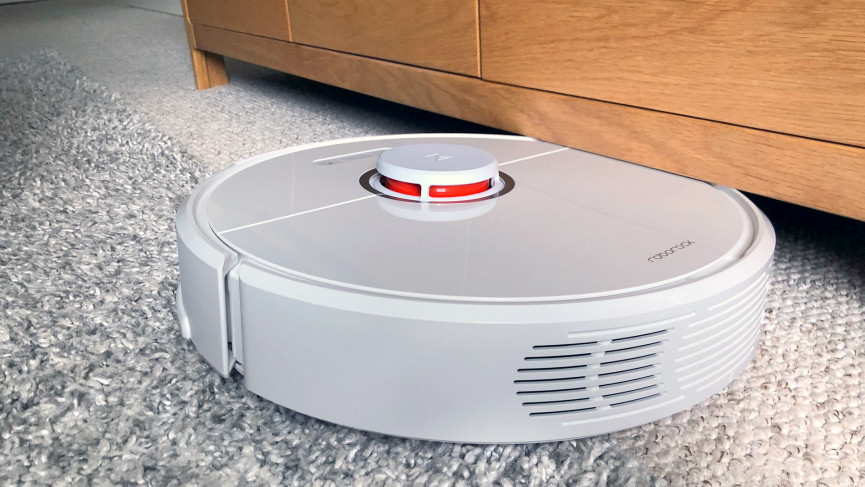
Dyson’s 360 Eye(£799) shows the kind of eccentric thinking and high-class design work you’d expect of the British brand. Its squat dimensions and sci-fi style leave it looking nothing like any of the other RVCs.

The Dyson’s cleaning power is characteristically excellent, and we appreciated its methodical ‘square spiral’ cleaning method. Along with the Neato, it’s the only cleaner with a brush that runs the full length of its body.
However, the Dyson didn’t have the battery capacity to complete a clean of my modestly sized flat. It ran out of juice after around 40 minutes, then had to return to base mid run for a 1hr 30 recharge. While it did all this without fuss, it meant a greatly extended run time compared to its high-end rivals.
There’s something refreshingly pure about the Dyson 360 Eye’s approach, but it undoubtedly lacks the advanced features of the iRobot, Neato, Roborock and Miele.
While it will map out each clean, it won’t save them or allow you the ability to pick zones, while Dyson actually recommends that you put down physical obstructions if there are areas you don’t want the 360 Eye to venture.

Though it uses advanced 360-degree vision technology to map out key ‘landmark’ features, each run is like the first time for the 360 Eye. That means that its navigation abilities fall somewhere between the two navigation approaches. For £800, you might expect a little more.
These issues have now addressed these issues in the Dyson 360 Heurist, the 2020 follow-up. It is even more powerful than the 360 Eye, and a lot smarter too. The Heurist will have an initial scout around your house or flat before any cleaning, to map out your living space. You can then set a timetable to cover specific areas, and make it head back to higher traffic spots more regularly.
At launch we found some of the navigation neeeds a little work. The Dyson 360 Heurist gets stuck sometimes and misses out areas on occasion. But this will likely improve significantly with updates.
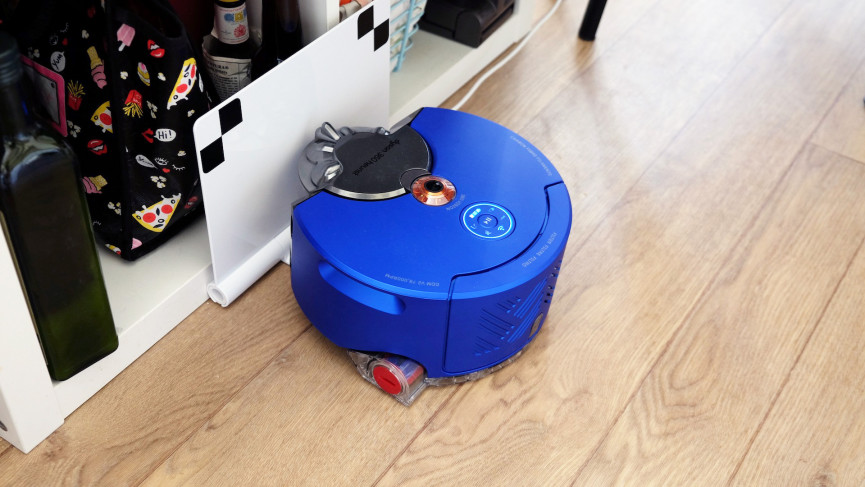
Other pros and cons are similar to those of the Dyson 360 Eye. Its pure vacuum effectiveness is brilliant, but the Heurist takes its sweet time to perform a full sweep. It may well need to head back to its base station to recharge half-way through as well.
This is no problem if you'll leave the 360 Heurist to do its thing while you're out or at work. But it may get on the nerves of home workers. Still, Dyson robo vacs are hard to beat if you want to avoid taking out your manual vacuum at all costs.
We wanted a little more for the money from the Miele Scout RX2, too. With a £700 RRP and an actual price of around £650, it’s the third most expensive RVC in our tests, and it certainly looks and feels the part.
It has some of the tidiest, most appealing hardware of them all. In particular, we loved the ingenious ‘lunch box’ bin design, which makes emptying and cleaning said bin a breeze.

Another neat touch is the positioning of two side brushes (as opposed to the usual single one) on individually sprung bumper arms. Being able to see your RVC go about its business using its two cameras is another cool feature.
The Miele RX2 is a very effective cleaner too, as evidenced by the fact that it completed our hall-and-kitchen cleaning test in just 12 minutes, yet still managed to clean up a respectable amount of the mixture.
But as good as the Miele hardware is, the software is a mess. The app is extremely ugly and proved very difficult to set up, with repeated failures to connect before I got it running. The maps it creates don’t seem particularly accurate, either.
All of these alternatives are directly comparable to the Neato Botvac V7, our test winner, but the Ecovacs Deebot N79S is a close competitor to our value pick, the Eufy RoboVac 30C.
It’s similarly priced at just over the £200 mark, making it another option for those on a budget. It looks similar too, and adopts the same kind of bump-and-run approach to cleaning. Set it free with the app, and the Deebot N79S will keep on running until it runs out of juice.

However, it’s simply not as good as the Eufy in any way. It doesn’t clean particularly brilliantly, and was the only RVC we had to stop manually during our 30-minute cleaning test (the Eufy has a 30 minute short run option).
Despite that extended run, it was comfortably the worst when it came to the amount of mixture it left behind.
The Ecovacs Deebot N79S was consistently unable to find its way back to base after a clean, too. It simply kept on crawling around our flat until either it ran out of juice or we put it out of its misery.
